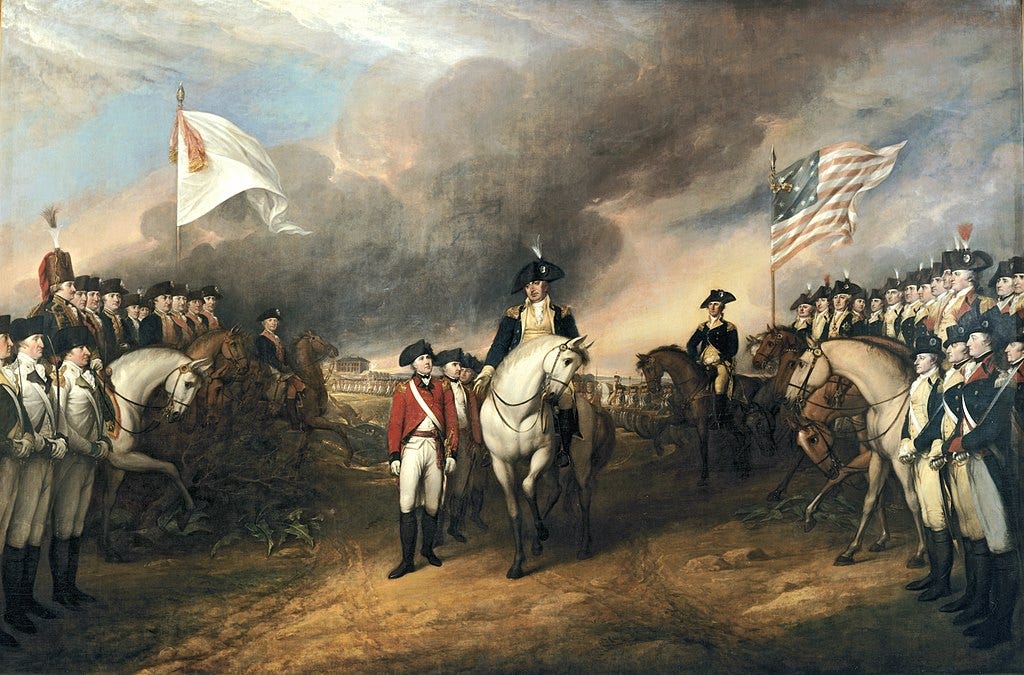The Birth of a Republic
Part 4: Declaration and Constitution

The thunderous cannons of Yorktown had fallen silent. On October 19, 1781, after a decisive siege led by General George Washington and aided by French forces, British General Cornwallis surrendered his army. This pivotal moment marked the end of major fighting in the American Revolution. But the fight for a new nation wasn't over. The colonists now had the daunting task of building a government structure to embody the ideals of liberty and self-rule they had declared their right to just a few years prior. This birthed a fascinating period of political thought and debate, resulting in the creation of a unique system of government that continues to shape the United States today.
The birth of the United States government wasn't a singular event, but a series of crucial steps that took place over the course of years. The first major act was the Declaration of Independence in 1776. This document, written by Thomas Jefferson, served as the philosophical foundation for the new nation. It enshrined ideas like liberty, equality, and the right to self-government, justifying the colonists' rebellion against British rule.
We hold these truths to be self-evident, that all men are created equal, that they are endowed by their Creator with certain unalienable Rights, that among these are Life, Liberty and the pursuit of Happiness.—That to secure these rights, Governments are instituted among Men, deriving their just powers from the consent of the governed…
-Excerpt from the Declaration of Independence, 1776
However, the colonies needed a way to function during the war. The Articles of Confederation, established a loose national government. This initial attempt had limitations. It created a weak central authority with most power residing in individual states. This made addressing national issues like defense and trade cumbersome. Additionally, the Articles lacked an executive branch, leaving the nation without a single leader, and representation in the national legislature was based on each state having one vote, regardless of population. This frustrated larger states.
Recognizing these weaknesses, delegates met in Philadelphia in 1787 to revise the Articles. Their discussions took a dramatic turn, leading them to create a whole new document: the Constitution of 1789. This process involved heated debates and compromises. The most significant compromise, often called the Great Compromise, addressed representation in the national legislature. It established a bicameral system: the Senate with equal representation for each state and the House of Representatives based on population. It also set forth that enslaved inhabitants of the states, for purposes of calculating population, counted as three-fifths of a person. This compromise was enacted to balance the power between smaller and larger, Northern and Southern states.

The newly crafted Constitution outlined the structure of the government, but some worried it gave too much power to the federal government and didn't protect individual liberties. The Bill of Rights, ratified in 1791, addressed these concerns. These first ten amendments to the Constitution guaranteed basic rights like freedom of speech, religion, and assembly. It also established a system of checks and balances, where each branch of government could limit the power of the others, preventing any one branch from becoming too powerful.
Congress shall make no law respecting an establishment of religion, or prohibiting the free exercise thereof; or abridging the freedom of speech, or of the press; or the right of the people peaceably to assemble, and to petition the Government for a redress of grievances.
-Third Article, ratified as the first amendment to the Constitution of the United States, 1791
This process, from revolution to the creation of a balanced republic, ensured a government that would reflect the will of the people while safeguarding their fundamental rights. It wasn't a perfect document, but it provided a framework for a nation that continues to evolve today.
